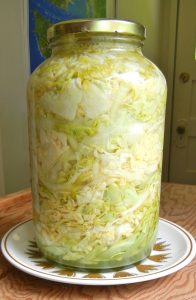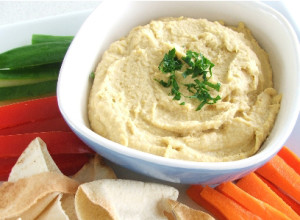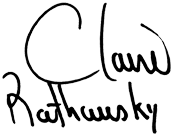Methods of Treating Candida
Candida albicans is a slippery customer to treat because it can exist in different forms. It can exist as a single-celled yeast form or as a larger fungal organism. The ability to exist in different forms enables Candida to live at different temperatures and at different pH levels. While both forms release the same myriad by-products that interfere with wellbeing, the invasive fungal form is of more concern.
It is the fungal form that can penetrate through the mucous membranes and enter the bloodstream. This then allows the by-products that Candida creates to enter the bloodstream and potentially affect other organs. It should also be noted that Candida albicans is not the only strain of Candida but it is the most prevalent when it comes to human fungal infection.
The main treatment for yeast overgrowth is dietary change. The primary aim of the Candida diet is to reduce sugar in all its forms in an effort to starve the Candida out. Please be aware that the more you research anti-Candida diets, the more confusing they may become. There are many areas of contention. Keep in mind that the elements that are the most hotly contested are often the least crucial. The most important goal of an anti Candida diet is starving the bacteria by reducing the sugar. Other dietary recommendations are secondary importance to this.
To find out the what some of the causes of this yeast infection are visit What causes yeast infections ?
When you are fighting an overgrowth of Candida you are essentially trying to reduce the “bad” gut flora and naturally the next step is to increase
the “good” gut flora.
Foods you need to avoid on the Candida diet:
Sadly it includes many of those delicious foods we just love!
Sugar in all its forms, including honey, agave nectar, rice syrup, fructose and artificial sweeteners.
Fruit, as fruit contains fruit sugars. This includes dried fruit, fruit in natural fruit juice, fruit juices and fresh fruit.
Mushrooms and starchy vegetables, including potatoes, corn, sweet potato and pumpkin.
Processed meats are to be avoided, such as ham and salami, sausages and smoked or cured meats.
Gluten-containing grains such as wheat, rye, spelt and kamut.
Cow’s milk dairy products, as the high lactose content promotes the overgrowth of Candida. These products include milk, cream, cheese, s our cream, ice-cream and sweetened yoghurt.
Sweetened milk substitutes, including sweetened soy milk, rice milk, oat milk and almond milk.
Alcohol, including beer, wine, spirits etc.
Peanuts — which are not nuts but Legumes and grown under the ground. They can carry a mould that is harmful to your digestion.
Pistachios, as they can also carry a mold that is bad for digestion.
Margarine, prepared salad dressings, sauces and mayonnaise.
Soft drinks and coffee.
Foods you are allowed:
Eat lots of non-starchy vegetables such as leafy greens, cucumber, broccoli, cauliflower, onions, garlic, avocado, celery, snow peas, zucchini, sprouts, asparagus and olives.
Eat unprocessed protein such as beef, lamb, kangaroo, chicken, turkey, eggs and fish (not tuna, swordfish or shark, which can be high in heavy metals).
Eat small amounts of gluten-free grains, including amaranth, quinoa, millet, buckwheat and brown rice.
Eat small amounts of natural cow, sheep or goat’s yoghurt (no sugar added) or kefir.
Coconut milk and small amounts of unsweetened soy milk.
Unflavored tofu or tempeh.
Legumes, including kidney beans, black-eye peas and cannellini beans.
Nuts and seeds, including almonds,hazelnuts, pumpkin seeds, sunflower seeds and walnuts.
Fresh or dried herbs and spices.
Cold-pressed oils, including olive oil, flaxseed oil and sesame oil.
Herbal teas, including dandelion, peppermint, chamomile, rosehip and chicory-root coffee substitute.
If you are suffering from strong sugar cravings, a small amount of stevia or xylitol can be used. Make sure there are no other ingredients added when you choose one of the various brands of these sweeteners. Using xylitol as a sweetener is allowed because it actually inhibits candida and has also been shown to reduce tooth decay. No other sweeteners are allowed.
The only fruit allowed are lemons, limes, avocados and olives.
Butter or substitute with avocado or tahini.
Hummus.
Drink lots of water.
Some naturally anti-fungal foods to include in your diet:
- Garlic. There have been many studies detailing the benefits of garlic, with one finding a garlic solution to markedly inhibit the growth of Candida albicans.
- Coconut oil and coconut flour. Coconut oil is stable at high temperatures, making it an ideal oil to
cook with. It contains three active constituents that have been found to be anti-fungal.
- Onions. Several active constituents in onions have been found to be anti-fungal, although not as strongly as garlic, which is also in the onion plant family.
- Olive oil. Contains the constituent oleuropein. A study in the Journal of Food Safety found it to be effective against 18 out of 30 fungi that were tested.
Meal suggestions
- Breakfast ideas: Omelette’s with eggs and veggies; poached eggs with grilled tomato; leftover veggies mashed and made into patties then lightly fried in coconut oil: avocado on brown rice toast; miso soup with brown rice.
- Lunch ideas: Salad with chicken and olive oil/lemon juice dressing; homemade chicken and vegetable soup; stir fried veggies with protein; boiled egg with chopped veggies.
- Dinner ideas: Vegetable soup with split peas; kangaroo and veggies; fish and salad; stir-fried veggies and beef; coconut milk curry with dried chilli and spices.
- Snack ideas: Handful of raw nuts; cut-up vegetables with hummus; natural yoghurt; avocado on corn thins with seeds sprinkled on top; tinned salmon; herbal tea; boiled egg.
You may wonder why no reference has been made to eating an “alkaline diet”. The simple yeast form of Candida actually prefers an acidic environment, which is why it happily exists in your slightly acidic intestines. For Candida to switch to its invasive fungal form it needs a slightly alkaline or neutral environment. It actually creates this itself by using nutrients in your digestive system to make ammonia, which alkalizes the pH in its immediate surroundings.
When you are trying to treat a bug like Candida that can create its own pH level, eating an “alkaline diet” is not a high priority. The high priority is stopping the yeast form from morphing into the invasive fungal form. To do this, the best dietary approach is removing its food source, namely sugar in all its forms.
PROBIOTICS
Probiotics are an essential part of any Candida treatment program. When you are fighting an overgrowth, you are essentially trying to reduce the “bad” gut flora and naturally the next step is to increase the “good- gut flora. The natural flora in the intestines include over 500 species of bacteria. The vast majority of these bacteria are anaerobic. Your gut flora changes throughout your life. Factors such as diet, age, immune system functioning and regularity of bowel movements all influence this balance.
Optimizing the balance of these organisms is of crucial importance to health for several reasons. Some micro-flora help digest foods that our digestive system would otherwise struggle to break down. Having an abundant population of good bacteria competing for food and space in the gut helps to limit the growth of harmful bacteria. There are several gut bacteria that help to regulate acidity in the intestines.
The most common one is Lactobacillus acidophilus. Its name, acidophilus, gives a hint at its nature. This helpful micro-organism releases lactic acid and, when there is enough present, assists in keeping the gut at the correct pH level. Finally, good digestive micro-flora help to modify the immune system and suppress inflammation.
Science’s growing understanding of probiotics means we can use particular strains to achieve very targeted outcomes in the body.
For Candida, the particular strains that are helpful are lactic acid-producing bacteria, including Bifidobacteria longum, B. bifidum, B. infantis, B. breve as well as Lactobacillus rhamnosus and L. acidophilus. Lactobacillus acidophilus has actually been shown in studies to prevent Candida from attaching itself to human cells, as can other strains of lactobocillus bacteria.
Not only does taking a probiotic supplement “crowd out” the Candida, but these probiotics also produce small amounts of acidic metabolites as part of their metabolic processes.
Garlic is a powerful treatment for a host of health problems but excels at treating infection.This is particularly desirable in the intestines as it helps to establish a pH that prevents Candida converting to the fungal form.
It’s also possible to make your own probiotics at home. Most traditional cultures have some form of cultured
In modern Western homes, some of the easier fermented foods you could begin to incorporate into everyday life are kefir (fermented milk) and fermented vegetables such as unpasteurized sauerkraut. Making kefir is very simple once you have sourced the kefir starter. This can be easily found on the Internet and detailed instructions on how to make it abound.
This is a recipe I have made recently and it is delicious with caraway seeds. It took me about 30 mins from start to finish and we enjoyed eating it after a week. I will keep you updated on how we feel after a few weeks…
From our hearts to yours,
 cook with. It contains three active constituents that have been found to be anti-fungal.
cook with. It contains three active constituents that have been found to be anti-fungal.


